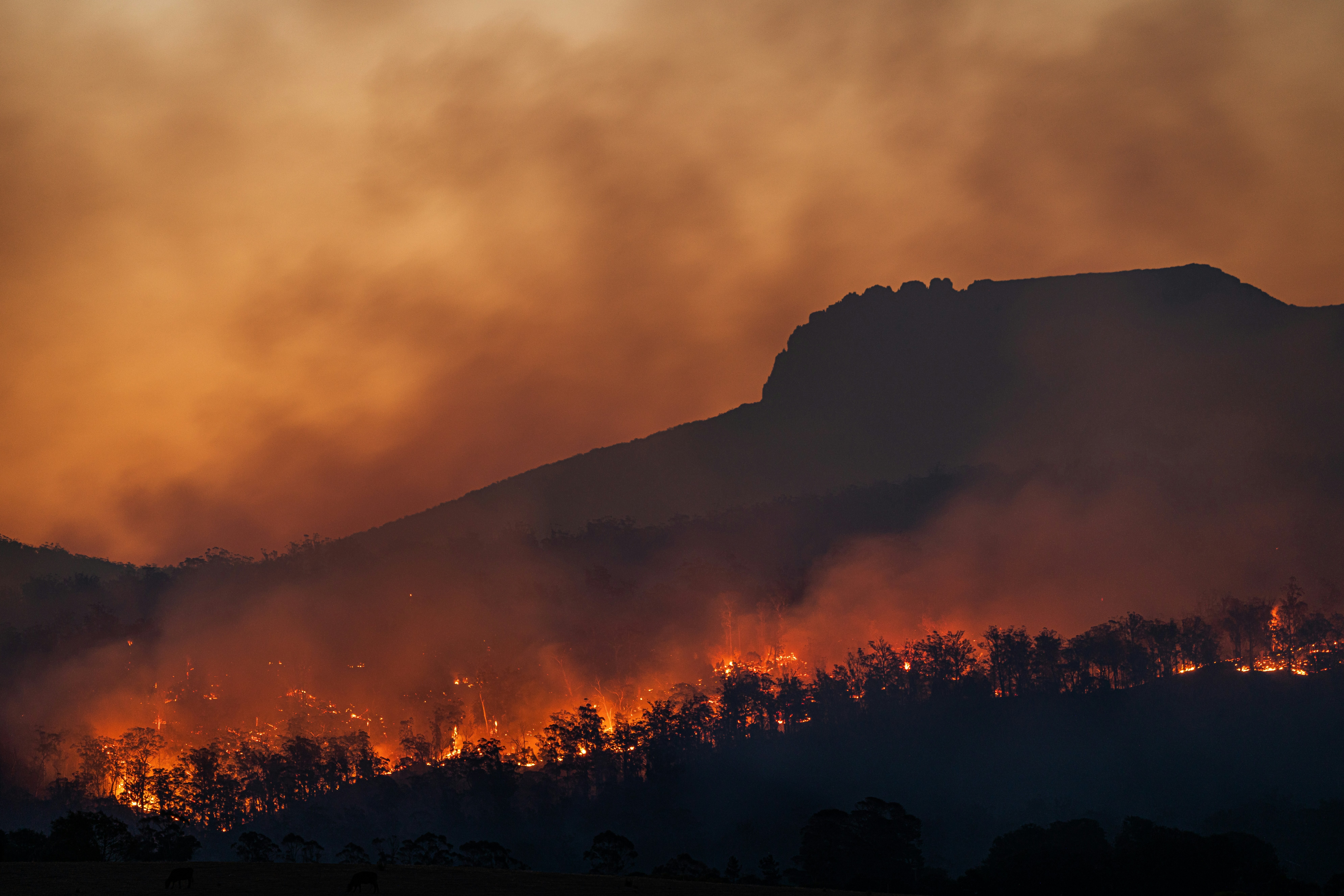How do Early Warning Systems work – and how can we improve them?

Early Warning Systems analyse and predict extreme weather events and natural disasters.
Image: Unsplash/Matt Palmer
Stay up to date:
Climate Indicators
- Early Warning Systems can help us better predict and then react to the dangers of extreme weather events and climate change.
- AI and other emerging technologies are helping to improve these systems – however, more work must be done.
- A recent white paper from the World Economic Forum, Catalysing Business Engagement in Early Warning Systems, calls on governments to incentivize business and make meteorological data “as accessible as possible”.
Over the past decades, environmental risks have steadily consolidated their position as the greatest future threat faced by humanity. But fear is also growing for their impact in the here and now.
In the latest Global Risks Report from the World Economic Forum, extreme weather events ranked as the second-highest short-term risk. They also topped the list of long-term risks.
In the face of rising concerns, new innovations are improving safety for those affected by natural hazards. Early Warning Systems can monitor and predict hazards including floods, tsunamis, landslides, volcanoes and droughts, alerting people to risks in advance and providing them with vital time to protect themselves against disaster.
But how do these systems work and how can they be improved?

How Early Warning Systems work
Early Warning Systems (EWS) use a wide range of sensors, detectors and data to analyze and predict extreme weather events and natural disasters.
For example, flood risk detectors in Nepal have enabled the community-based systems to improve warning lead times by up to eight hours.
In India, advances in rainfall detection have allowed the LANDSLIP project to collaborate with partners including national, state and district authorities, as well as local NGOs to develop a National Landslide Forecasting Centre.
Following the Indian Ocean tsunami of 2004, UNESCO-IOC developed tsunami warning centres to swiftly analyze ocean disturbances and issue messages to warn of potential areas of danger.
Combining this information with historical data allows scientists to better understand when areas are most at risk and can help governments and institutions form methodologies to predict and then react to dangers. By working together with communities and businesses, the risks can be more effectively managed.
How are Early Warning Systems developing?
With growing risk, it’s important for EWS to continue developing to reflect new, increasingly frequent or more severe threats.
AI has huge potential to help improve EWS. The United Nations University says the technology has the capability to “go beyond predicting what the weather will be towards what the weather will do”.
Elsewhere, the United Nations is spearheading a global early climate warning system. Announced in 2022 by UN Secretary-General António Guterres, the Early Warnings for All initiative looks to improve risk knowledge, monitoring, analysis detection, rapid communications and preparedness. It aims to provide protection for everyone on Earth by 2027.
One in three people – mainly in the least developed countries and small island developing states – lack adequate multihazard warning systems. As well as harnessing AI, the initiative is exploring remote-sensing and satellite technology, cell-broadcast and location-based SMS communications, and nature-based and nature-inclusive solutions.
How is the World Economic Forum fighting the climate crisis?
Where can improvements still be made?
While great strides continue to be made in the development and implementation of EWS, there are still areas that need to be addressed. Better collaboration between governments, institutions and businesses in particular will be required if these systems are to succeed.
A new white paper from the World Economic Forum, produced in partnership with the World Meteorological Organization and the Australian National University, explores this topic. Catalysing Business Engagement in Early Warning Systems champions the importance of providing open data, while also encouraging investment in strong public-private partnerships.
“Like most climate adaptation efforts, EWS suffers from a funding gap that limits its reach,” the white paper says. “However, there are opportunities for businesses to help close this gap and create value for both society and themselves.
The paper calls on governments to provide clarity and incentives to drive more business engagement and make meteorological data “as accessible as possible”.
At a briefing at the Forum’s Annual Meeting in January, an expert panel also discussed the topic, calling on both businesses and institutions to share information more feely and take action.
Accept our marketing cookies to access this content.
These cookies are currently disabled in your browser.
“Risk mitigation is only possible if you have information,” said Celeste Saulo, Secretary-General of the World Meteorological Organization. “Businesses have many roles to play in early warnings, from being users, from being partners, from being innovators and from being, of course, vendors of these systems.”
Johan Rockström, Director of the Potsdam Institute for Climate Impact Research, agreed saying: “Business has a great opportunity, but also a high degree of responsibility, to map risks of extreme events across their entire value chains and put that information out in public.
Accept our marketing cookies to access this content.
These cookies are currently disabled in your browser.
Don't miss any update on this topic
Create a free account and access your personalized content collection with our latest publications and analyses.
License and Republishing
World Economic Forum articles may be republished in accordance with the Creative Commons Attribution-NonCommercial-NoDerivatives 4.0 International Public License, and in accordance with our Terms of Use.
The views expressed in this article are those of the author alone and not the World Economic Forum.
Related topics:
Forum Stories newsletter
Bringing you weekly curated insights and analysis on the global issues that matter.
More on Climate ActionSee all
Nunzio Peleggi
March 28, 2025
Jack Hurd
March 27, 2025
Gill Einhorn and Dominic King
March 26, 2025
Victoria Masterson, Stephen Hall and Madeleine North
March 25, 2025





